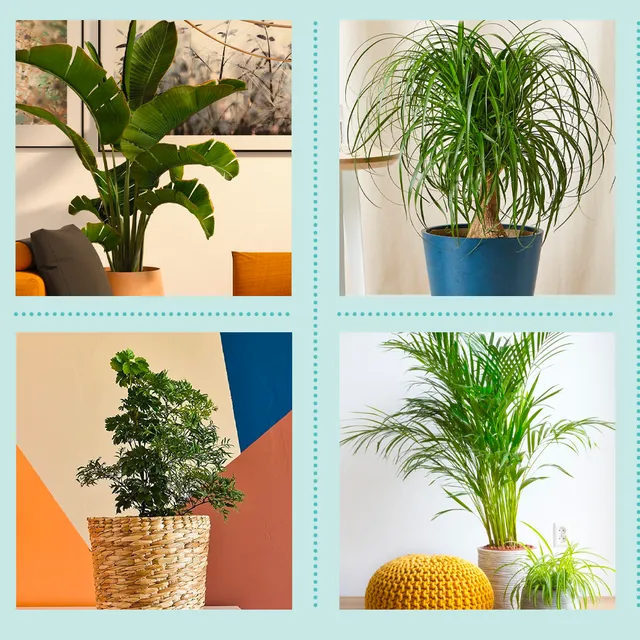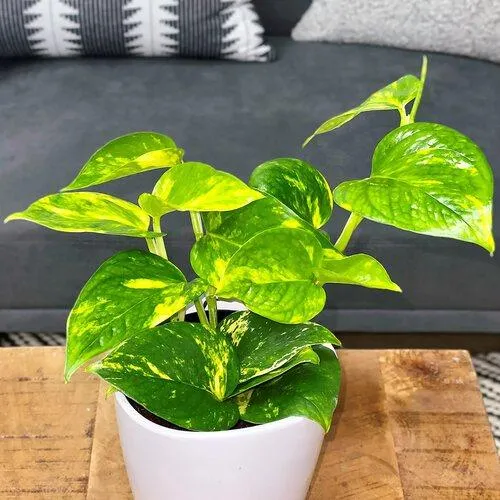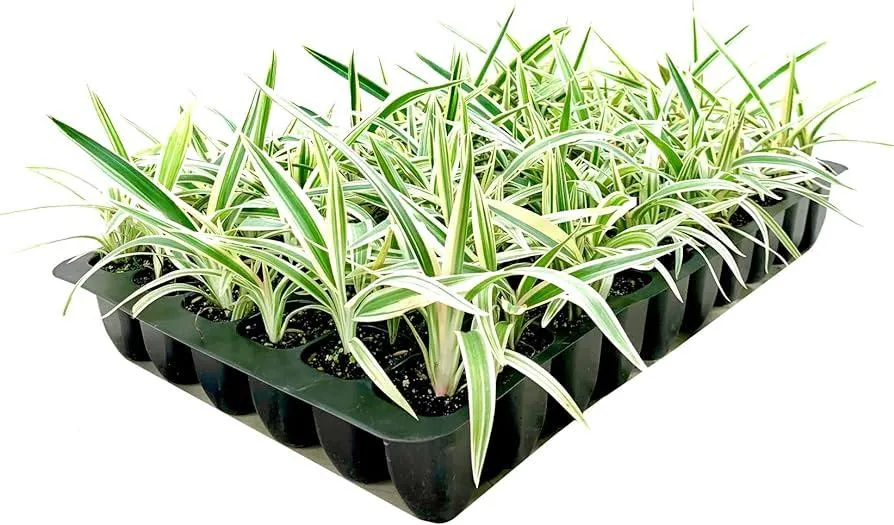The Top Variegated Plant Choices for Any Home or Garden
If you’re interested in adding some colorful accents and eye-catching foliage to your indoor or outdoor spaces, variegated plants are an excellent option to consider. But with so many varieties to choose from, it can be tough to narrow down the best ones. In this article, I’ll discuss 10 highly rated variegated plant varieties that should thrive even for beginning plant parents. Read on to find answers to all your questions about choosing low-maintenance variegated beauties.
1. Chinese Evergreens (Aglaonema)
Chinese evergreens, or aglaonemas, are very popular houseplants known for their tolerant nature and ability to thrive in low-light conditions. What makes them even more attractive is their colorfully variegated leaves that come in a wide array of patterns. From bright white and pink margins to intricate lacy patterns, aglaonemas never fail to liven up a space. I’ve found from experience that they’re fairly easy to care for and make wonderful low-light office or bedroom companions.
2. Zebra Plants (Aphelandra squarrosa)
With their bold dark and light green stripes, zebra plants always steal the show. But their good looks aren’t just skin deep – they’re also fairly low maintenance, preferring medium to bright indirect light. The one downside I’ve noticed is that they can be susceptible to occasional spider mite infestations, so keep an eye out for tiny webs or dots on the foliage. Regularly dusting the leaves with neem oil helps prevent issues. Overall, these dramatic stripy beauties offer big impact at a fair price point.
3. Peace Lilies (Spathiphyllum)
You’ve probably seen peace lilies in many homes due to their versatility and ease of care. Not only do their stalks of white blooms make a lovely addition, but their broad, glossy leaves often come beautifully variegated with creamy stripes or blotches. Though they like humidity, peace lilies are kind of forgiving if you miss a few waterings. Put one in your kitchen to help cleanse the air with its natural absorbing qualities. If yours drops some lower leaves, don’t worry – it’s just adjusting and will bounce back with some TLC.
4. Variegated Monstera Deliciosa
More commonly known as the Swiss cheese plant, Monstera deliciosa has become hugely popular in the indoor plant world thanks to its exotic yet hardy nature. A variegated cultivar is truly a showstopper, as bright sections of creamy white or yellow break up the characteristic dark green, fenestrated leaves. They climb or trail beautifully but are still contained as houseplants. From my experience, give these beauties moss poles for support as they grow and keep soil consistently moist in warmer months.
5. Spider Plants (Chlorophytum comosum)
Here’s a prolific choice that almost anyone can care for – spider plants. Their grassy foliage comes in traditional solid green or variegated forms featuring creamy white or yellow stripes and splashes. Not only do they thrive in various light levels, but they multiply quickly by producing plantlets right along the leaf margins. A friend of mine gave me a small spider plant cutting years ago, and now I have many happy offspring from it! An easy way to start a collection without much effort.

6. Pothos (Epipremnum aureum)
Commonly known as devil’s ivy, pothos is a versatile trailing vine loved for its tolerance of varied conditions like low light and infrequent watering. Golden, marble queen, and neon varieties showcase beautiful patterns of chartreuse, white, and yellow on their heart-shaped leaves. You can let a pothos climb a pole, mount it on a moss frame, or just let it cascade over the side of a pot. They grow so sturdily that smaller cuttings will readily root in water or soil. Ask any plant parent – pothos has to be one of the most forgiving indoor plants around.
7. Dieffenbachia (Dumb Cane)
With its thick, sturdy leaves splashed or spotted with contrasting white or cream, dieffenbachia adds bold tropical flair to any space. Just exercise some caution, as the plant contains calcium oxalate crystals that can cause irritation if eaten. Give yours medium to low light and keep soil continuously moist to prevent browning leaf tips. Dieffenbachia comes in compact varieties well-suited for tables too. From what I’ve heard, they’re poisoning risk aside, these guys are pretty tolerant of average home conditions.
8. Flame Violets (Episcia cupreata)
If you’re on the hunt for a small but eye-catching variegated plant, look no further than flame violets. Their petite rounded leaves emerge streaked or edged in pink, cream, or lime green shades for high-impact color in small spaces. These beauties perform best in bright, indirect light and consistently moist soil. Plus they often bloom colorful flowers too! I think flame violets would make sweet tabletop accents or terrarium specimens. They may be little, but they pack a visual punch.
9. Elephant Ears (Alocasia)
Nothing says tropical flair quite like elephant ears. While their huge glossy leaves come primarily in shades of deep green, certain hybrid varieties also showcase delightful white or yellow variegation. These beauties love warmth, humidity, and rich soil to really shine. But from my experience, even in average homes they develop impressive stature that makes a statement. Elephant ears bring bold, architectural structure to any space that also benefits from their air-purifying abilities. Just keep in reach of curious little hands or pets!
10. English Ivy (Hedera helix)
Finally, no list of top variegated plants would be complete without mentioning classic English ivy. Its trails of dark green leaves intricately edged or blotched in creamy white provide lush greenery that complements any style. English ivy thrives in a wide variety of growing conditions, from medium light indoors to shadier outdoor spots. It spreads quickly over the ground, climbing surfaces, or spilling from hanging baskets. Ask garden centers and they’ll say English ivy is nigh unkillable! Just give it something to cling to as it merrily rambles wherever it may.
In summary, the 10 variegated plant varieties above – from Chinese evergreens to English ivy – should offer outstanding color, low maintenance care, and resilience to suit homeowners of all experience levels. If one of these catches your eye, I’m confident you’ll find the beauty and ease in growing variegated indoor or outdoor foliage for years to come. Keep experimenting to discover your own favorites too!

Hope this detailed review has answered all your questions about choosing the best variegated plants! Let me know if you need any other gardening tips. Happy planting!
Top Variegated Indoor Plants
| Plant | Care Level | Watering Frequency | Light Needs | Special Notes |
|---|---|---|---|---|
| Spider Plant | Easy | Allow soil to dry out between waterings | Bright Indirect Light | Produces plantlets than can be propagated |
| Peace Lily | Easy | Water when top inch of soil dries out | Bright Indirect Light | Flowers often, sensitive to tap water |
| ZZ Plant | Very Easy | Water every 2-4 weeks | Low Light | Tolerates neglect, virtually indestructible |
| Chinese Evergreens | Easy | Water when top inch of soil dries out | Bright Indirect Light | Large variety of leaf patterns and colors |
| Pothos | Very Easy | Water when top inch of soil dries out | Low to Medium Light | Vigorous grower, trails or climbs |
FAQ
-
What are some of the best variegated houseplants?
Pothos plants come in a lot of types with different colors. Golden pothos has yellow streaks in its leaves and marble queen pothos has white splashes. These plants are very hardy and can survive with not very much light. Philodendrons and Monsteras also come in variegated kinds that might work well.
-
Are variegated plants harder to care for than solid colored plants?
In general, variegated plants take a bit more effort than ones with only one solid color. The different colors mean the plant has to work harder to produce chlorophyll. As a result, variegated plants may grow more slowly and be more prone to dropping leaves if they are not getting enough light or water. You have to keep a closer eye on them.
However, many variegated plants are still pretty simple to care for as long as they are not overwatered or deprived of sufficient sun. You just need to pay closer attention to their needs compared to plants that always stay green. Some varieties like variegated pothos are known to be actual pretty low maintenance.
-
Why are variegated plants more expensive than solid colored plants?
Since variegated plants take more energy for the plant to produce leaves with more than one color, they are less common in nature than all-green plants. Growers have to select cuttings or seeds carefully to propagate the variegation. This additional effort means variegated kinds are in shorter “supply” than regular plants. The lower availability makes them more costly.
On the other hand, once you buy a variegated plant, caring for it properly can mean it sticks around for years, basically paying for itself over the long run compared to replacing all-green plants that may not last as long.

-
Is low light better or worse for keeping variegation?
Most variegated plants need adequate light levels to maintain their pattern of colors. Putting a variegated plant in too low of light can cause the white or yellow parts to revert back to solid green over time as the plant prioritizes producing chlorophyll. However, blaze of sun may also not be best. A nice bright indirect light seems to allow variegation to last longterm. But every plant type is a little different.
Some dicuss that low levels of light may conserve the plant’s energy reserves compared to strong rays. Perhaps low light helps variegation persist in the short term, yet over many months, adequate lighting fosters healthier growth while retaining unique pigmentation. More study on specific varieties could offer better guidance.
-
Can variegated plants regain their coloring if it’s lost?
Unfortunately once a variegated plant fully reverts to being one solid color, it normally cannot regain its variegation. However, if a variegated plant is merely experiencing some loss of its white or yellow parts due to not getting enough light, moving it to brighter conditions may help those colored areas to expand again over time. But it’s never a guarantee. Catching the revert early improves odds of bringing back the plant’s original appeal.
Experts say caring for unhappy variegated houseplants demands patience. Shifting routines to suit each one takes trying different locations and adjusting as needed. With care, their lovely patterns will hopefully stick around for years to delight.
-
Why do some variegated plants cost more than others?
Rarer or newly developed variegated varieties have higher prices than general cultivars since fewer are available. Stable variegation that reliably passes down generations gets a premium. But even amongst common kinds, luscious full patterns fetch higher costs over duller mutants. Only cuttings with strong coloration survive propagation to sell. Supply and demand impact costs, yet appeal remains key.
At the same time, mass producers may offer consistent quality crops at lower costs than niche greenhouses shipping few unusual specimens. Folks paying top dollar basically subsidize botanical tinkering yielding tomorrow’s trendy Talk-of-the-Townplants. Yet right now, a plainpothos does just fine too!

-
Should variegated plants be repotted more often?
It appears that variegated plants may need repotting slightly more frequently than all-green kinds. Their nutrient and water needs are a bit greater due to expending extra energy maintaining colorful patterns. Cramped roots find it tougher meeting those demands. However, overpotting stresses them as well. The right-sized pot allows enough room to spread without feeling confined. Regular checks let you rehome as roots fill containers without getting too rootbound. Proper timing helps variegations look their best.
In summary, while variegated plants take a little more TLC, their gorgeous blotched, splashed and flecked foliage makes them totally worth the small extra bit of effort. Their visual impact brings beauty to any setting, decorating rooms with living botanical art.
-
Is it dumb to pay extra for variegation if it may not stick around?
That’s a fair question. Spending more on a plant that could potentially lose its unique markings does kind of seem like throwing money away. But maybe it ain’t that dumb if variegation’s loss depends on care. With diligent efforts, patterns will probably persist years to delight. Plus initial splurges fund breeding rarer beauties. Even if variegation vanishes, sound care lets non-showy survivors spread cheer too. So while variegation sticks, enjoy nature’s palette! When it goes, green’s still pretty darn mean.
